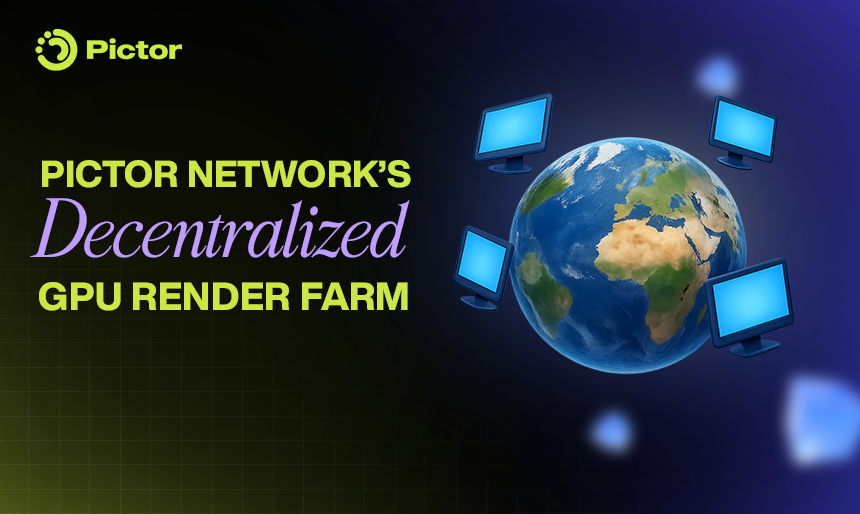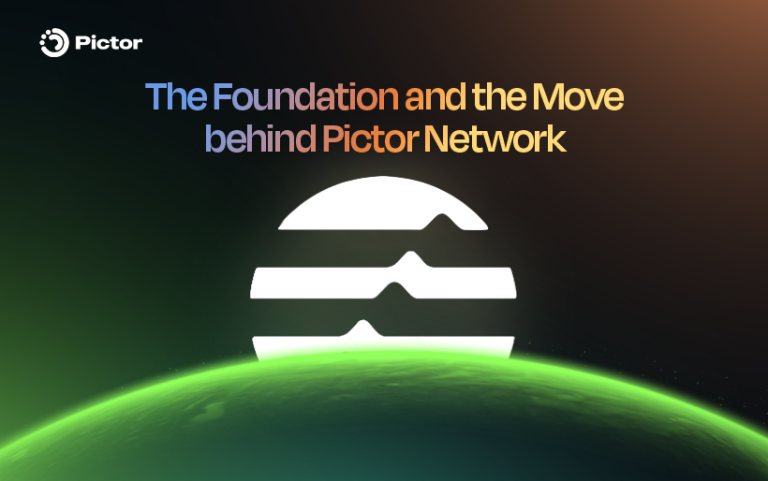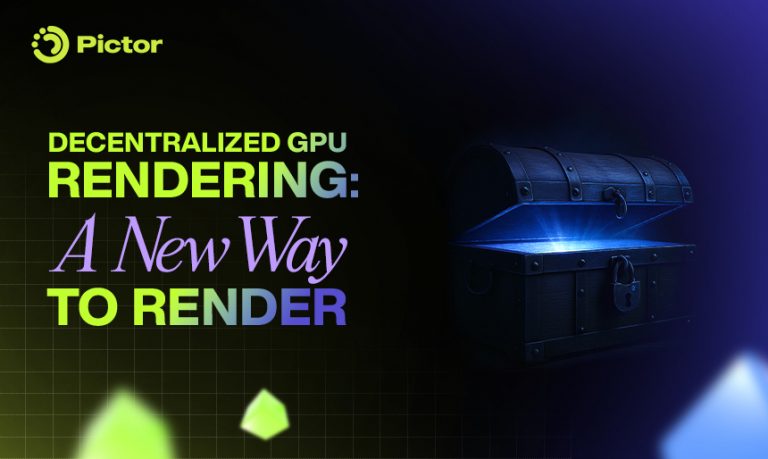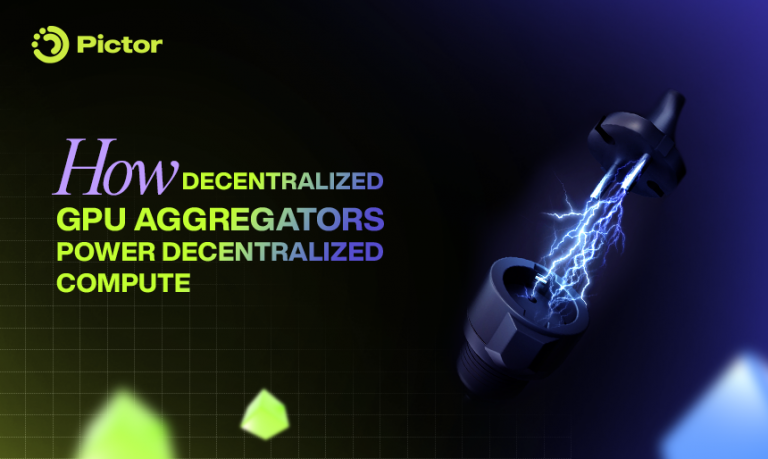“Decentralized GPU Render Farm: Uber for GPUs. Airbnb for compute. Pictor Network decentralizes the future of 3D rendering.”
Introduction: Uber for GPUs, Airbnb for 3D Rendering
Every masterpiece needs power, not just imagination but GPU horsepower to turn ideas into high-resolution 3D visuals or AI-enhanced images. But here’s the catch: Most rendering pipelines today are still trapped in centralized, outdated systems. They’re expensive to use, slow to scale, and nearly impossible for small teams or indie creators to access.
Meanwhile, around the world, millions of powerful GPUs sit idle, from gamers’ setups to underused studio machines.
So, what if rendering worked like Uber or Airbnb?
What if anyone with spare GPU power could offer it up, and creators anywhere could tap into it on demand?
That’s exactly what Pictor Network enables: a decentralized GPU render farm that turns idle hardware into a global, permissionless compute grid.
In this blog, we’ll break down how the system works – from the core participants to the real-world flows of 3D rendering and AI upscaling – so you can see how Pictor Network is reshaping the future of Web3 compute.
The Four Pillars of Pictor Network’s Decentralized GPU Render Farm Model
At the heart of Pictor Network is a collaborative model that brings together four key participants:
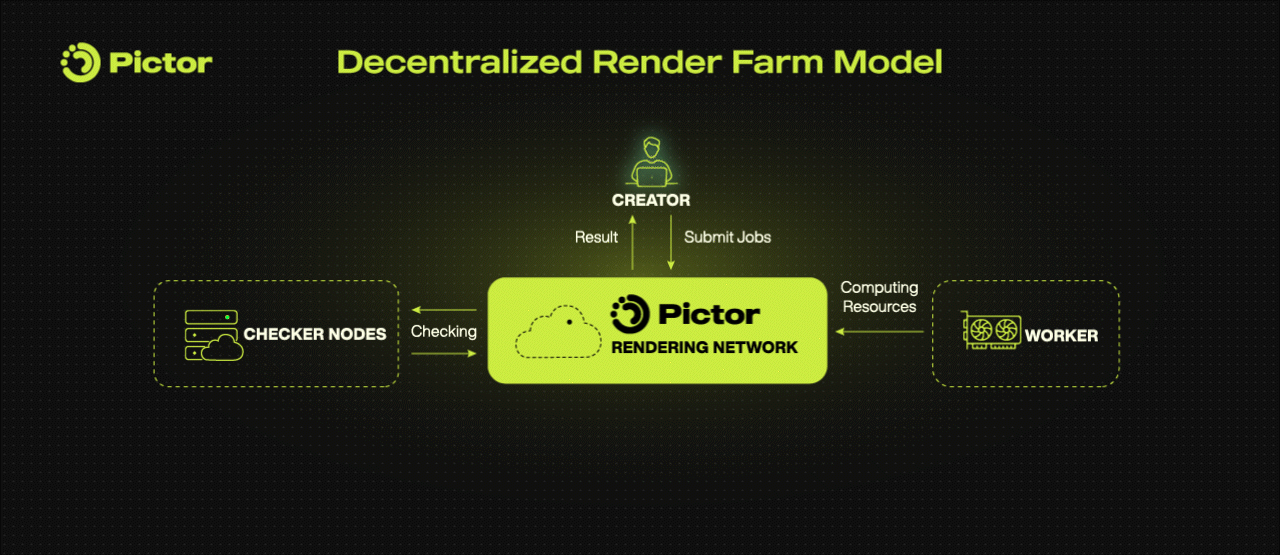
1. 3D Creator
Artists, studios, or anyone who needs high-performance GPU power for their 3D rendering and AI upscaling projects. They submit tasks to the network and benefit from the decentralized and cost-effective GPU resources provided by GPU Workers.
2. GPU Worker
GPU owners who contribute their computational power to the network for 3D rendering and AI upscaling jobs submitted by 3D Creators. Workers can be individuals or organizations with idle GPUs looking to maximize their utilization and monetization.
3. Checker Node
These participants play a critical role in maintaining the efficiency, reliability, and quality of the Pictor network. They perform various tasks, including job management, node management, and service quality assurance.
4. Pictor Network
The protocol facilitates the connection and coordination between 3D Creators, GPU Workers, and Checker Nodes, ensuring smooth operation and optimal resource allocation within the Pictor decentralized GPU network.
Pictor Network Flow: How the System Works
Let’s break down how computing jobs move through the network, from submission to final output, for both 3D Rendering and AI Upscaling.
Flow 1: 3D Rendering
Pictor Network’s 3D rendering service follows a SaaS model, supporting popular 3D software and rendering engines used by the creative industry.
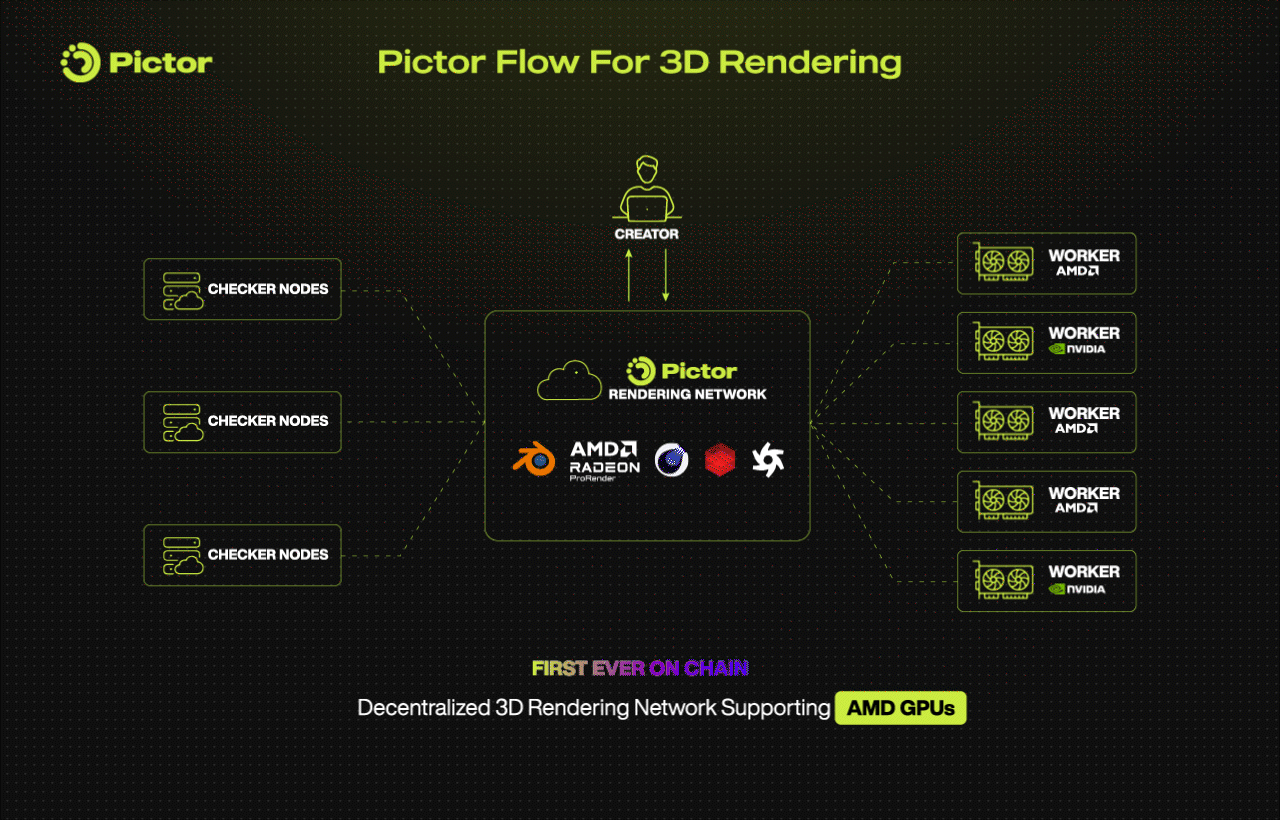
Here’s how the 3D rendering process works:
- Job Submission
3D Creators submit 3D rendering jobs through Pictor Cloud.
- Cost Calculation
The Pictor Network protocol calculates the required $PICTOR tokens or USD based on job complexity and resource needs. This information is attached in a smart contract and sent across the Pictor network.
- Job Processing
The job is assigned to GPU Workers via the Pictor Worker app, which integrates the necessary 3D software and rendering engines to execute the rendering tasks.
- Quality Verification
Checker Nodes oversee the rendering process, validating outputs to ensure they meet the creators’ requirements.
- Payment
Upon successful validation, the rendered outputs are delivered to 3D Creators, and $PICTOR tokens are distributed to Workers through the smart contract.
Flow 2: AI Upscaling (Ultra Render AI)
PictorNetwork ’s Ultra Render AI uses cutting-edge models to upscale images and videos to 4K, 8K, or even 16K resolution, ideal for gaming assets, cinematic visuals, and digital art.
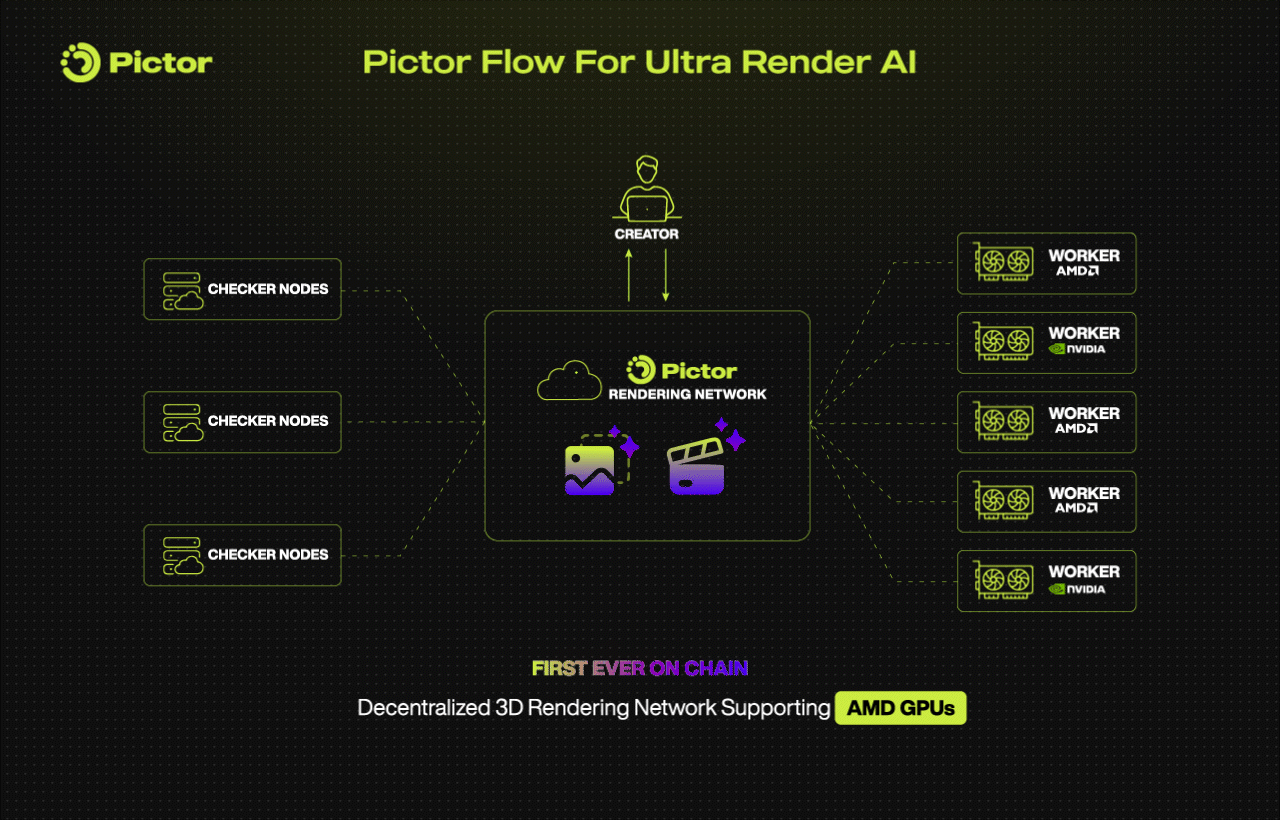
Here’s how the AI upscaling process works:
- Job Submission
3D Creators submit their upscaling jobs through Pictor Cloud.
- Cost Calculation
The Pictor protocol calculates the required $PICTOR tokens or USD based on job complexity and resource needs. This information is attached in a smart contract and sent across the Pictor Network.
- Job Processing
The job is assigned to Workers via the Pictor Worker app, which integrates AI technology for image and video upscaling and enhancement.
- Quality Verification
Checker Nodes oversee the upscaling process and validate the upscaled outputs.
- Payment
Upon successful validation, the upscaled outputs are delivered to 3D Creators, and $PICTOR tokens are distributed to Workers through the smart contract.
Why This Model Matters
Pictor Network’s decentralized render farm isn’t just an improvement; it’s a reimagining of how GPU computing should work in the era of 3D art, AI, metaverse, and Web3.
- Open and Permissionless: Anyone can join, no gatekeepers.
- Real-Time Scalability: The network grows as demand increases.
- Full Transparency: Every step, from job match to payout, is logged on-chain.
- 🎯 Efficiency-Driven: No more underused hardware.
By decentralizing GPUs, Pictor Network gives the compute power back to creators and compute providers.
Conclusion: The Future of GPU Rendering is Collaborative
Centralized clouds had their moment. Now it’s time for decentralized compute to shine. Pictor Network brings together 3D creators, GPU owners, and verifiers into a trustless, transparent, and high-performance rendering ecosystem.
Whether you’re rendering a blockbuster 3D scene or upscaling a generative artwork to 8K, Pictor Network makes it faster, fairer, and Web3-ready.
Ready to Tap the Grid?
Whether you’re a creator looking for affordable GPU power or a GPU owner ready to earn, Pictor Network makes it seamless. No middlemen. No lock-ins. Just compute, decentralized, verifiable, and on your terms.
Follow the future of DePIN:
- 🌐 Website: https://pictor.network/
- 🐦 X: https://x.com/pictor_network
- 💬 Telegram Community: https://t.me/pictor_community
- 📢 Telegram Channel: https://t.me/pictor_channel
- 🎮 Discord: https://discord.com/invite/gpcXrp3tvh
- 💼 LinkedIn: https://www.linkedin.com/company/pictor-network
- ▶️ YouTube: http://www.youtube.com/@Pictor_network
Pictor Network – Reimagining 3D and AI GPU Infrastructure.

